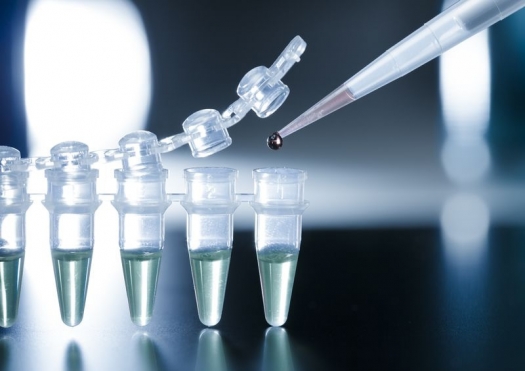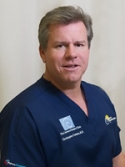StemCellResearch.jpg

Photo by luchschen, ©2016 / 1232rf.com
Internet advertisements for stem cell therapies abound. It seems like every disease imaginable has an advertised cure. If you're like most physicians, you're likely being asked by your patients to vet these therapies. After many years of clinical experience in the collection, lab processing, and deployment of autologous, adult stem cells, I've developed a series of questions I use with my patients.
Certification — The International Cellular Medicine Society (ICMS) has promulgated laboratory, practice standards and maintains a non-profit stem cell treatment registry. The easiest way to determine if the cell therapy is credible is to see if the clinic is ICMS certified.
Treating everything — The development of treatment protocols for stem cells is difficult and disease as well as tissue specific. This means that valid treatment isn't as easy as sprinkling magic stem cells on the patient. For example, the treatment protocol for knee osteoarthritis has a completely different approach than cardiac disease. Some stem cell clinics are operating at a high level focus on a small collection of diseases and perfect their protocols for those diseases. This may take years for each application. So if the clinic advertises that it treats everything from ALS to Parkinson's to knee arthritis, this usually indicates that it's not operating at a high level of credibility.
Cell source matters — Where are the stem cells obtained? Are they from the same patient (autologous) or from an allogeneic source? Many experts agree that autologous cells are more likely to have a much more robust safety profile than cells obtained from a donor. In particular, genes of the donor remain active in the host (which could have either a potentially positive or negative impact). In addition, knowing how the donor cells are screened for communicable disease is obviously important. Having said that, if the patient has a disease that results in a likely defect of stem cell function and is severely disabled, allogeneic stem cells may be considered in the risk vs. benefit equation.
Cell type matters — Embryonic and fetal stem cells have been documented to have a higher risk of tumor formation (teratoma) as well as the allogeneic risks discussed above. Cord blood cells are likely also more risky for the same reasons. While these cell types might be appropriate to use in patients who have life threatening illnesses or no quality of life, the risk/benefit ratio is not appropriate to use them for routine disease applications. As an alternative to allogeneic and embryonic cells, adult stem cells are present in all of us and have been shown to be effective in animal and early human clinical models for treating a wide variety of diseases. These cells can be broken into two main types that are commonly used (there are many more) – CD34+ hematopoetic cells (HPC's) and MSC's (mesenchymal stem cells). Autologous CD34+ cells or HPC's show real promise in treating vascular and cardiac arenas such as peripheral vascular disease and cardiac disease. MSC's show promise in many areas, including orthopedics and neurologic diseases.
Processing matters — How the cells are processed is very important. At the most simple level, cells can be harvested from a bone marrow aspirate and spun down in a centrifuge to isolate the buffy coat (rich in nucleated cells). Most stem cell clinics in operation around the world use this simple technique, which isn't truly a "stem cell" therapy as only 1 in 100 of these cells are HPC's and 1 in 10,000-100,000 are MSC's. Even though the stem cell yields are very low, this resulting mixture (known as BMAC-Bone Marrow Aspirate Concentrate), has shown some positive results in treating type II diabetes (when properly applied; see below) and in some cardiac applications. The next level of processing is cell pre-conditioning. This usually involves isolating cells as above and then applying certain growth factors in short duration incubation (a few hours to a few days at most). An example of this approach is the cell line used by the Israeli company Theravitae. Finally, the most advanced type of cell processing is culture expansion, where cells are grown to higher numbers over a few weeks. Most of the animal research showing dramatic results from adult stem cell therapy uses culture expansion. Few clinics take the time or have the expertise to culture expand cells, which is the Gold standard for stem cell therapy.
Delivery matters — Likely the easiest way to separate the wheat from the chafe in stem cell therapy is asking how the clinic plans on delivering cells. While IV delivery is attractive because of the low level of expertise it takes to deliver cells, studies have consistently shown that adult stem cells delivered in this fashion are trapped in the lungs (pulmonary first pass effect). Of even more concern is a recent study showing that for patients considering the use of stem cells to treat CNS disorders, only about 1 in 200,000 cells injected via an IV route reaches the CNS (1.5-3.7% made it past the lungs, 0.295% made it to the carotid artery, and 0.0005% made it past the blood brain barrier into the CNS). At this point, until these pulmonary first pass issues are worked out, credible stem cell delivery is local. This means placing cells directly into the tissue or into the arterial circulation that directly supplies the tissue. In addition, for orthopedic applications (and likely for others), it's hyper-local, meaning that placement of cells into one part of the joint may provide results, where as non-specific placement in the joint provides no results. The same holds true for cardiac placement. Placement in the cardiac arterial circulation will get some cells to the site, placement generally in the muscle will get more cells to the site, and placement in the transitional zone between the oxygenated muscle and the necrotic zone (transitional zone) will guarantee better cell survival and more cells that are capable of repair.
In summary, some simple questions can help you and your patients vet stem cell clinics. If the clinic won't answer these questions, then my advice would be to run in the other direction.
The ICMS undertakes an annual survey of all known practicing stem cell clinics around the world where it tries to get answers to these and other questions and ranks the credibility of the care being delivered.


